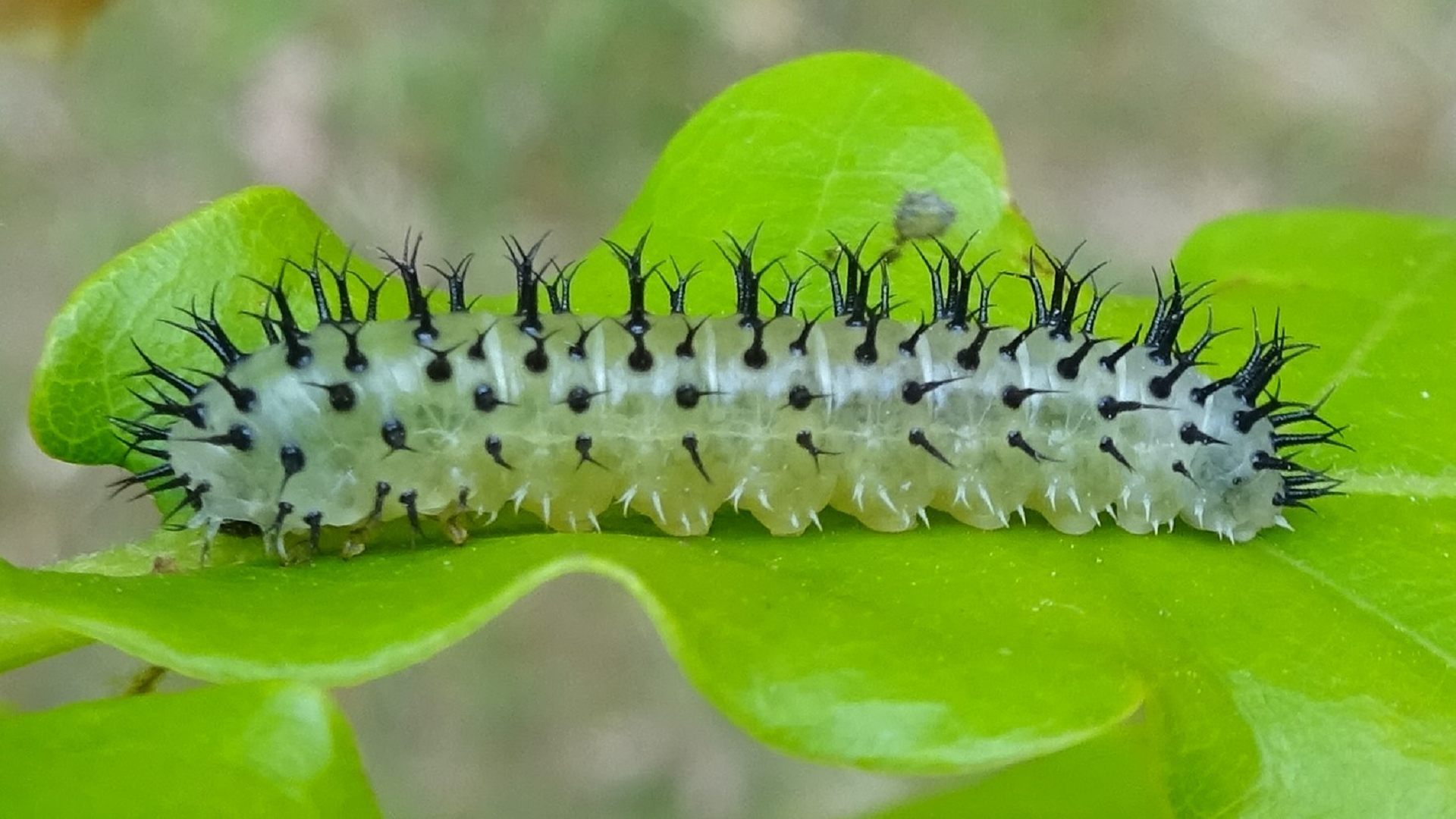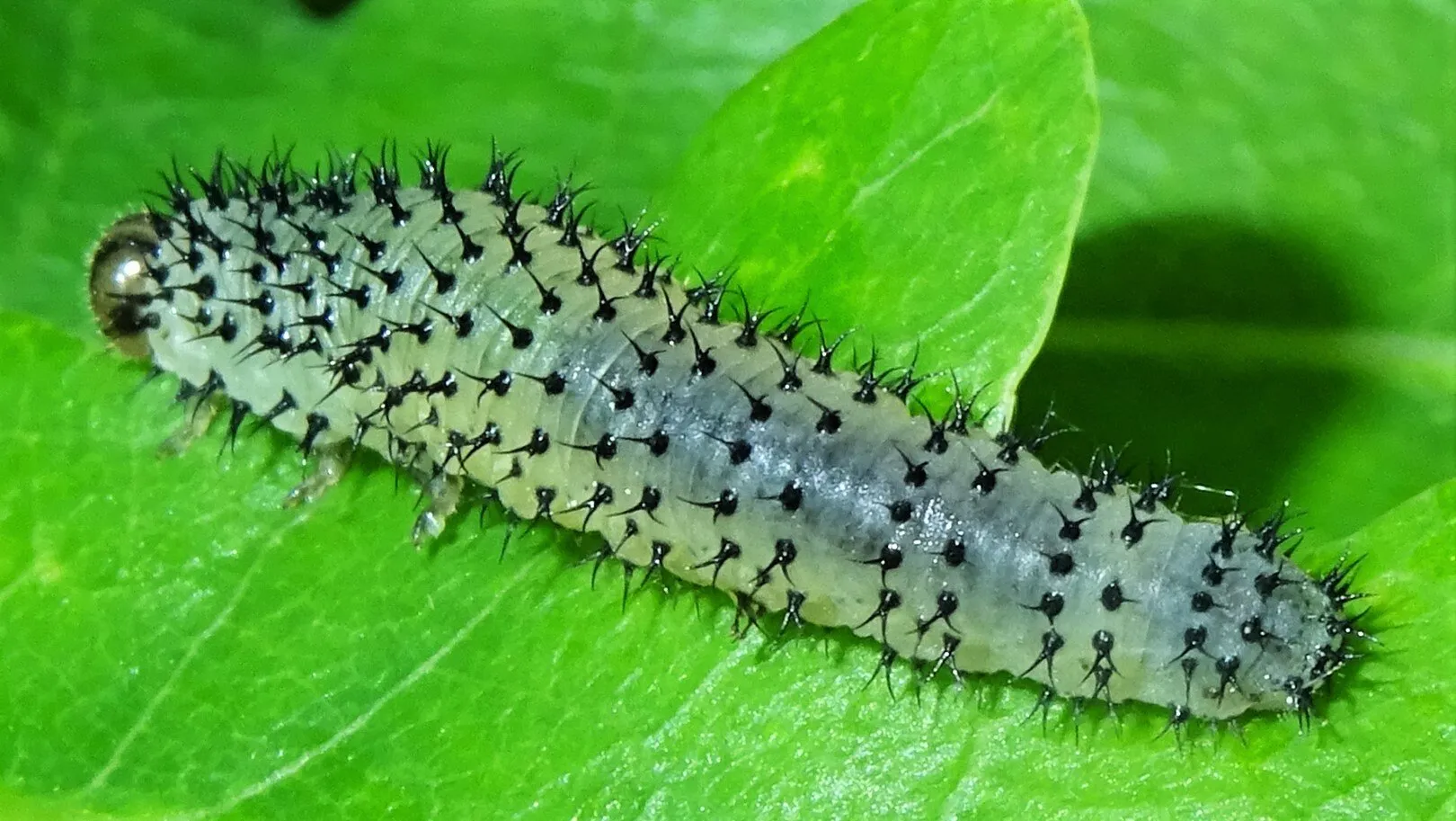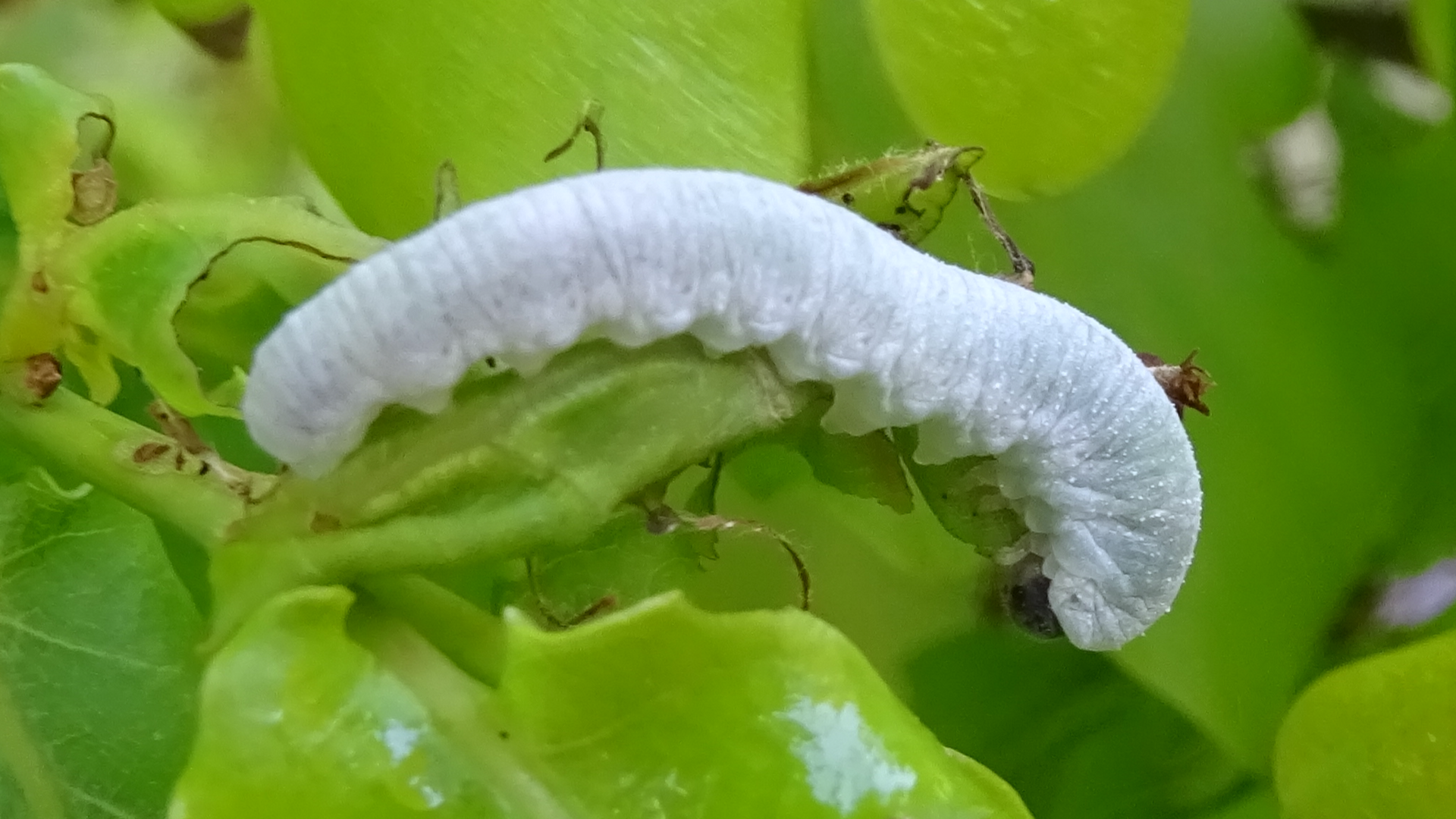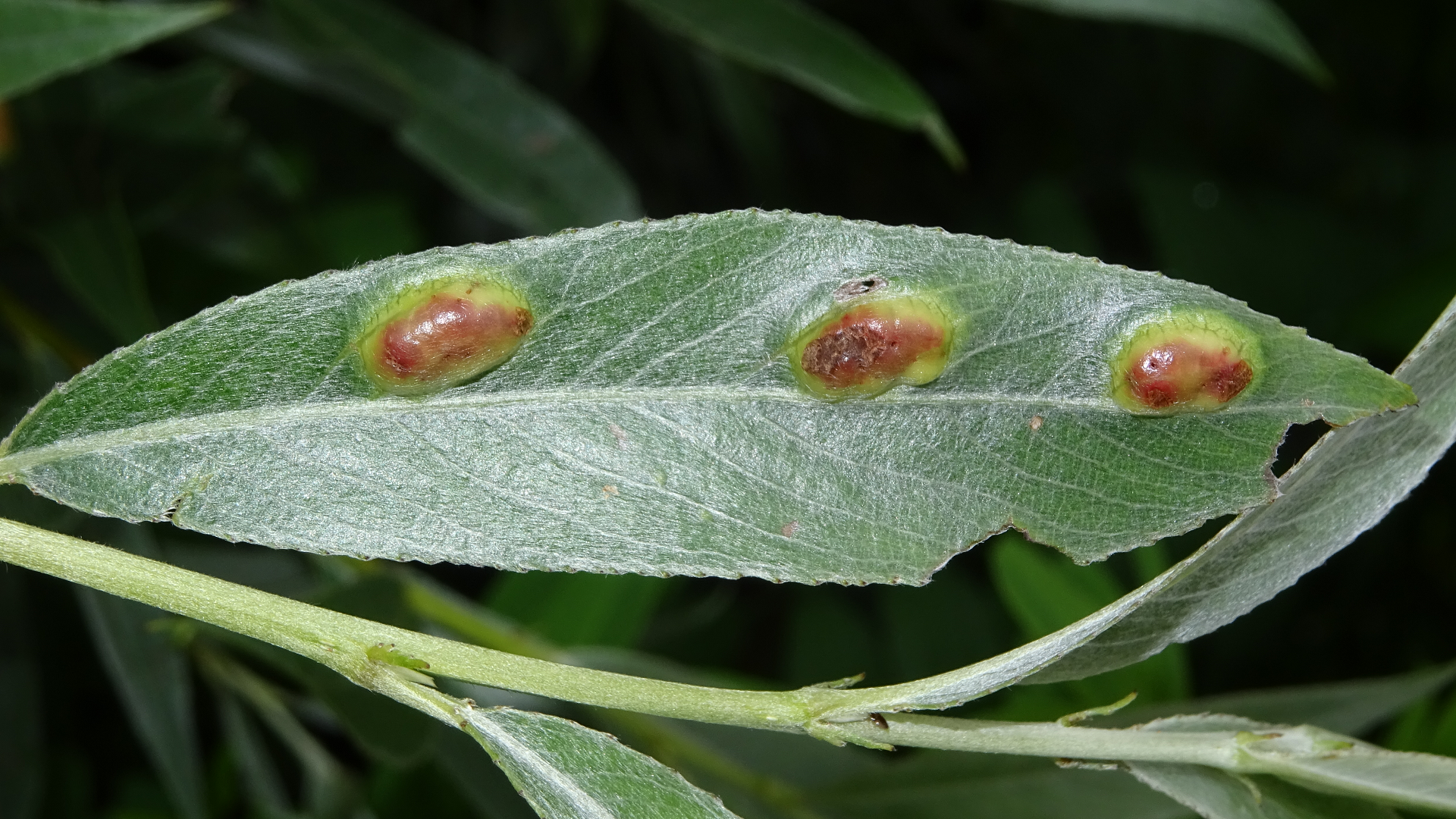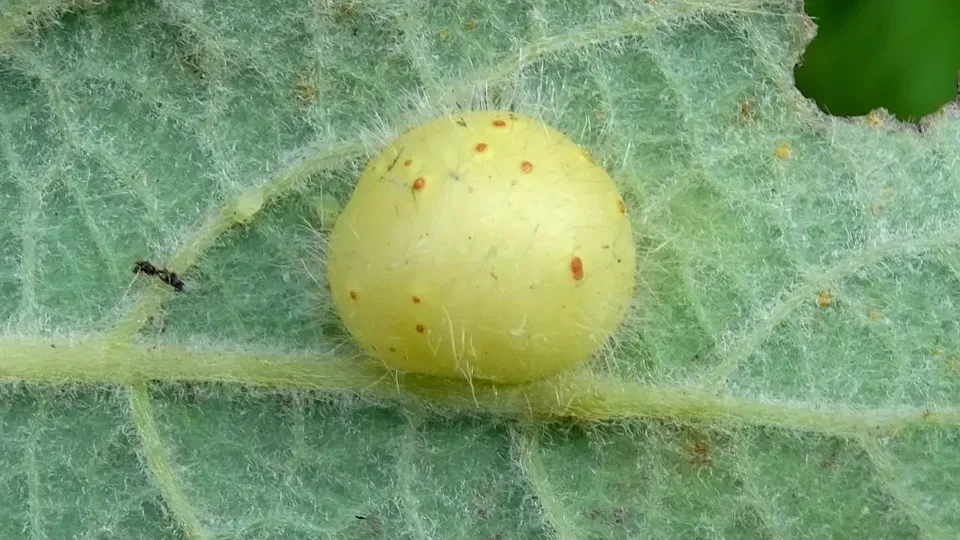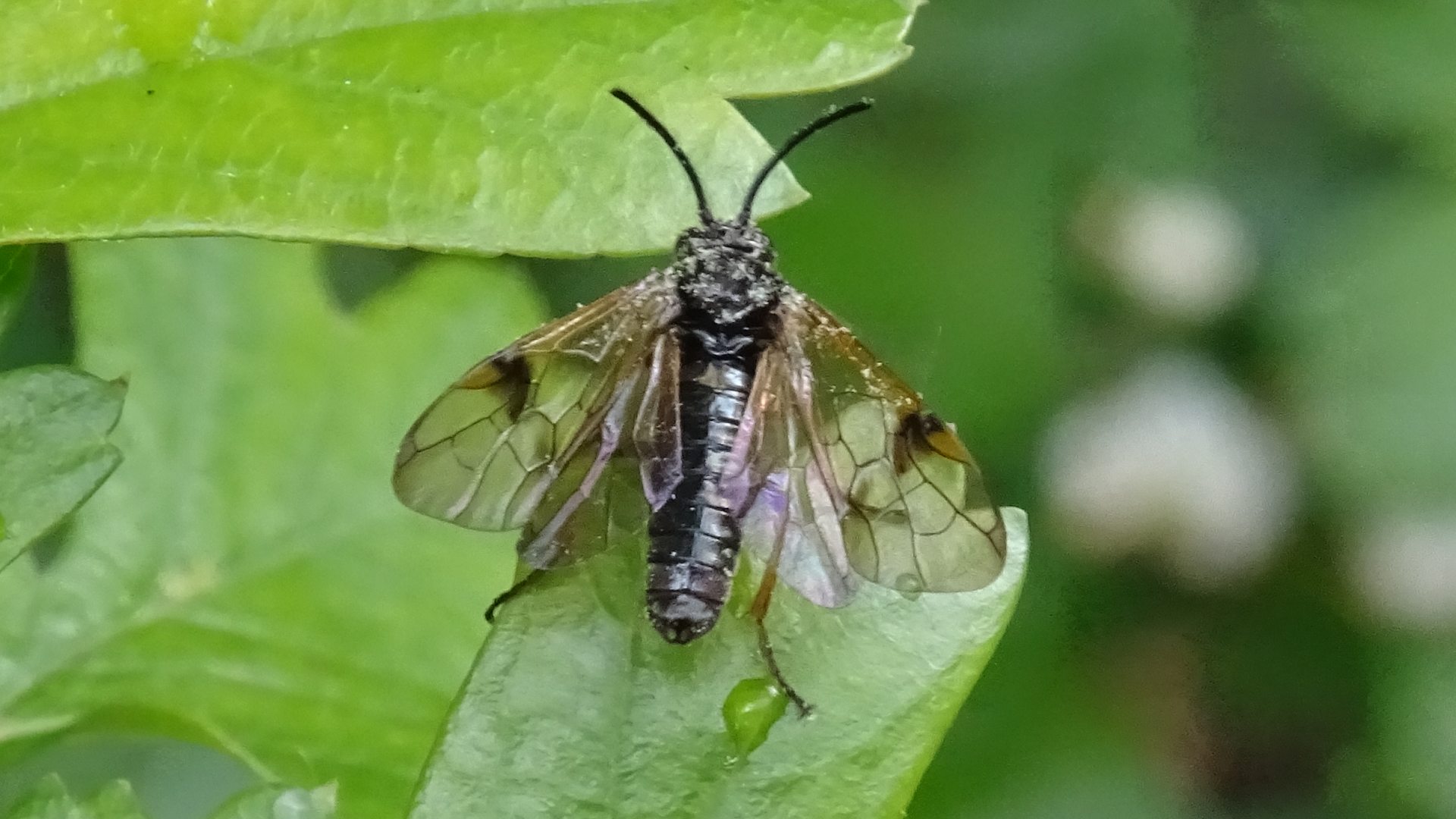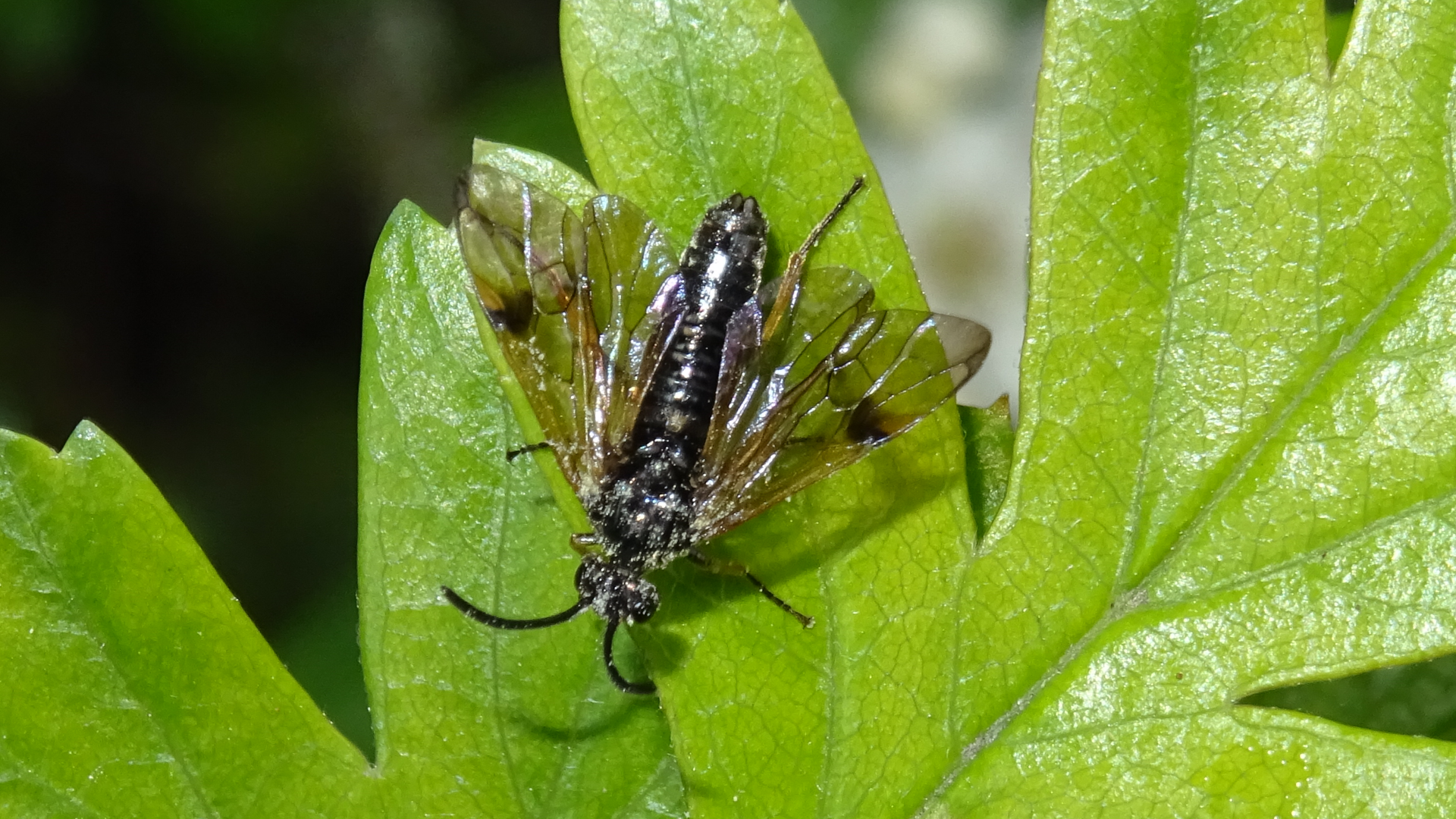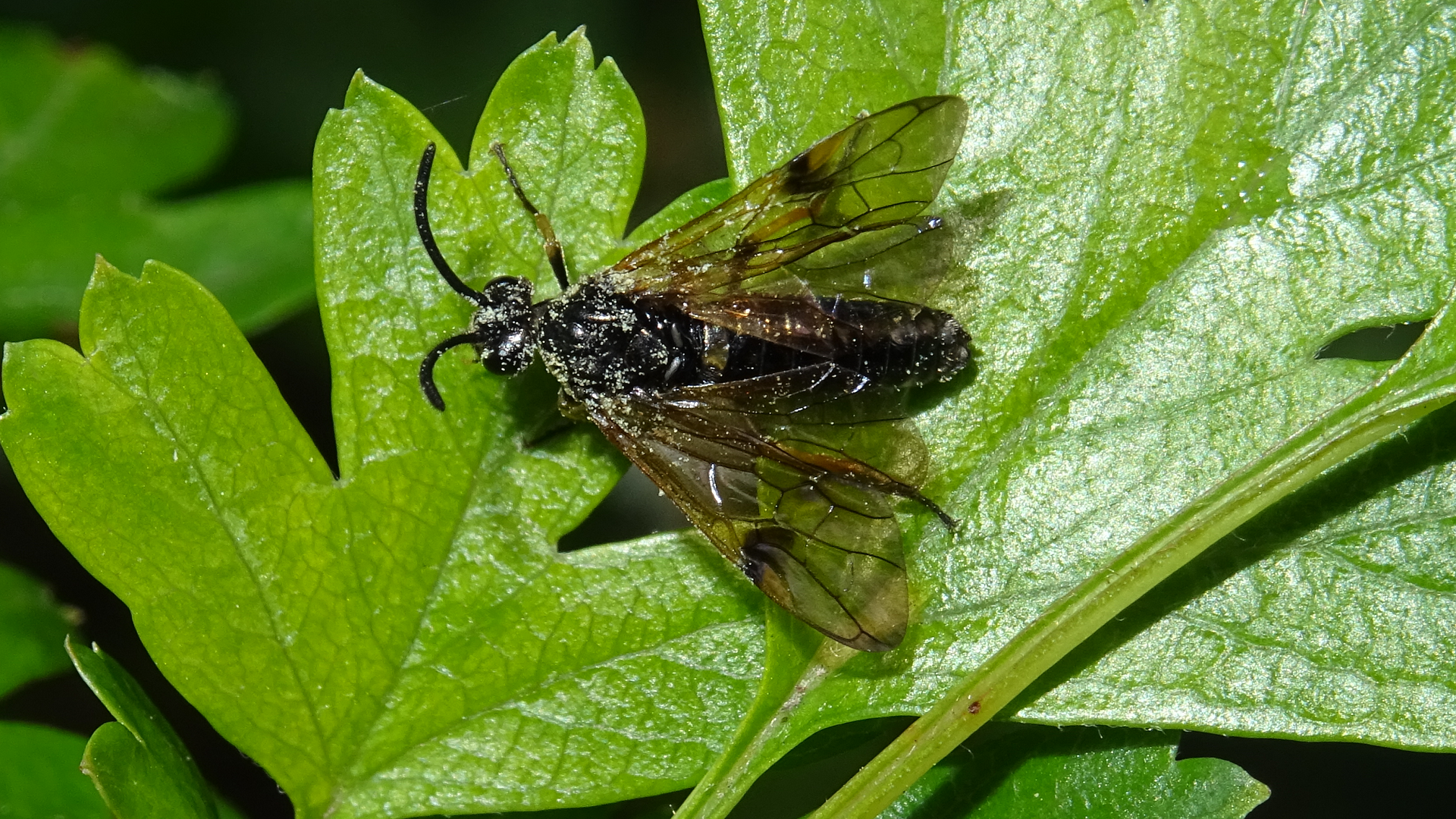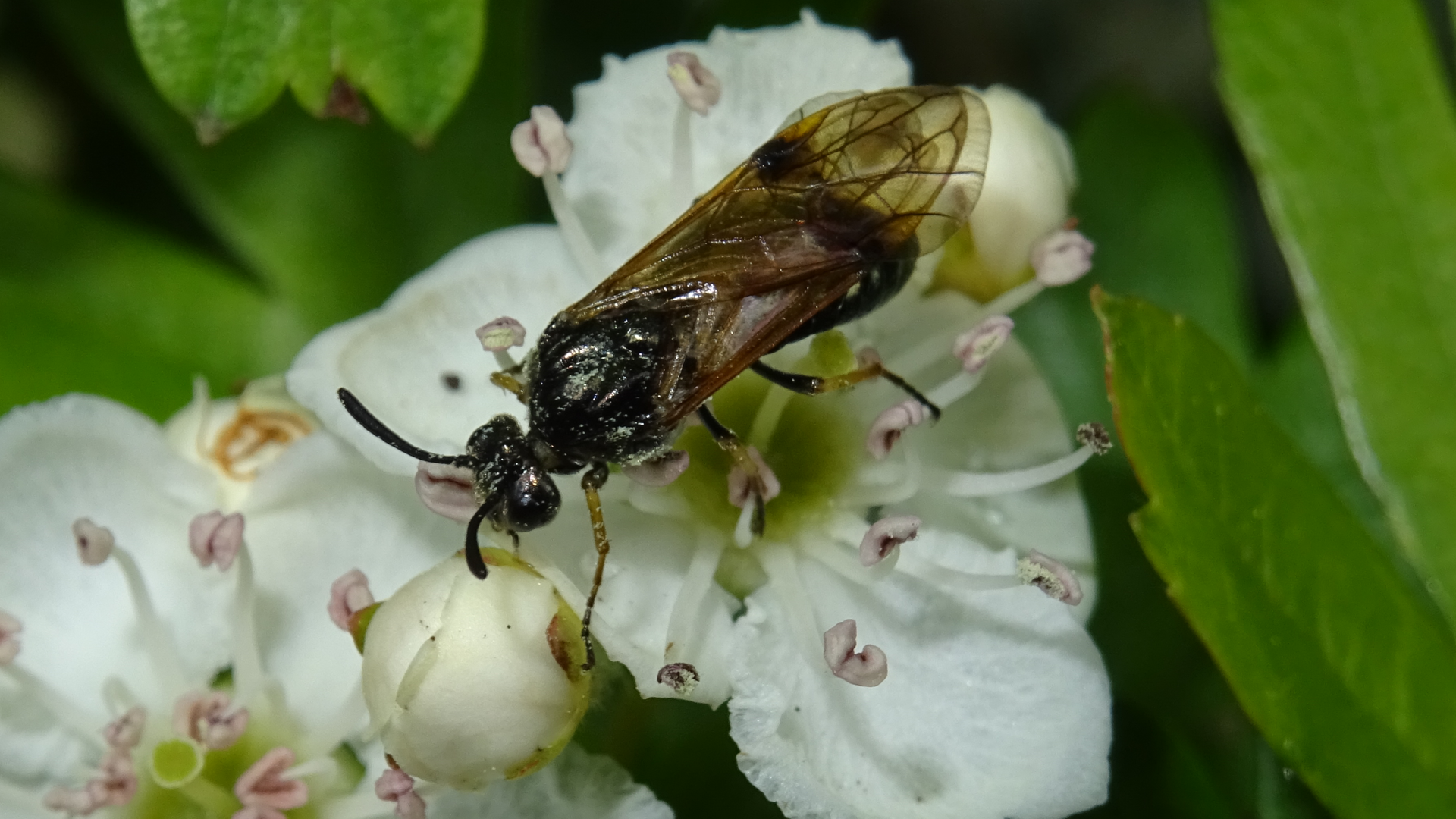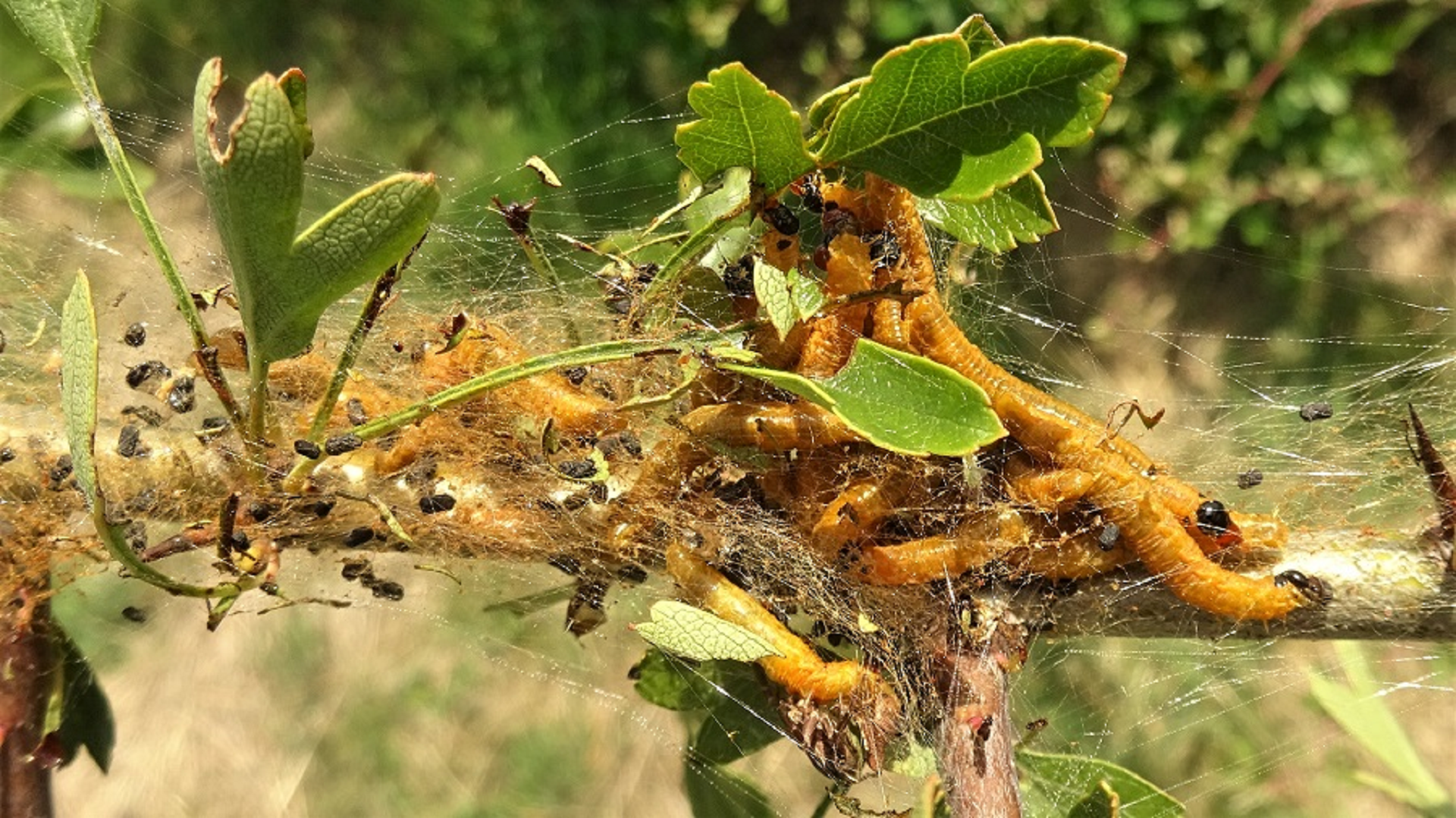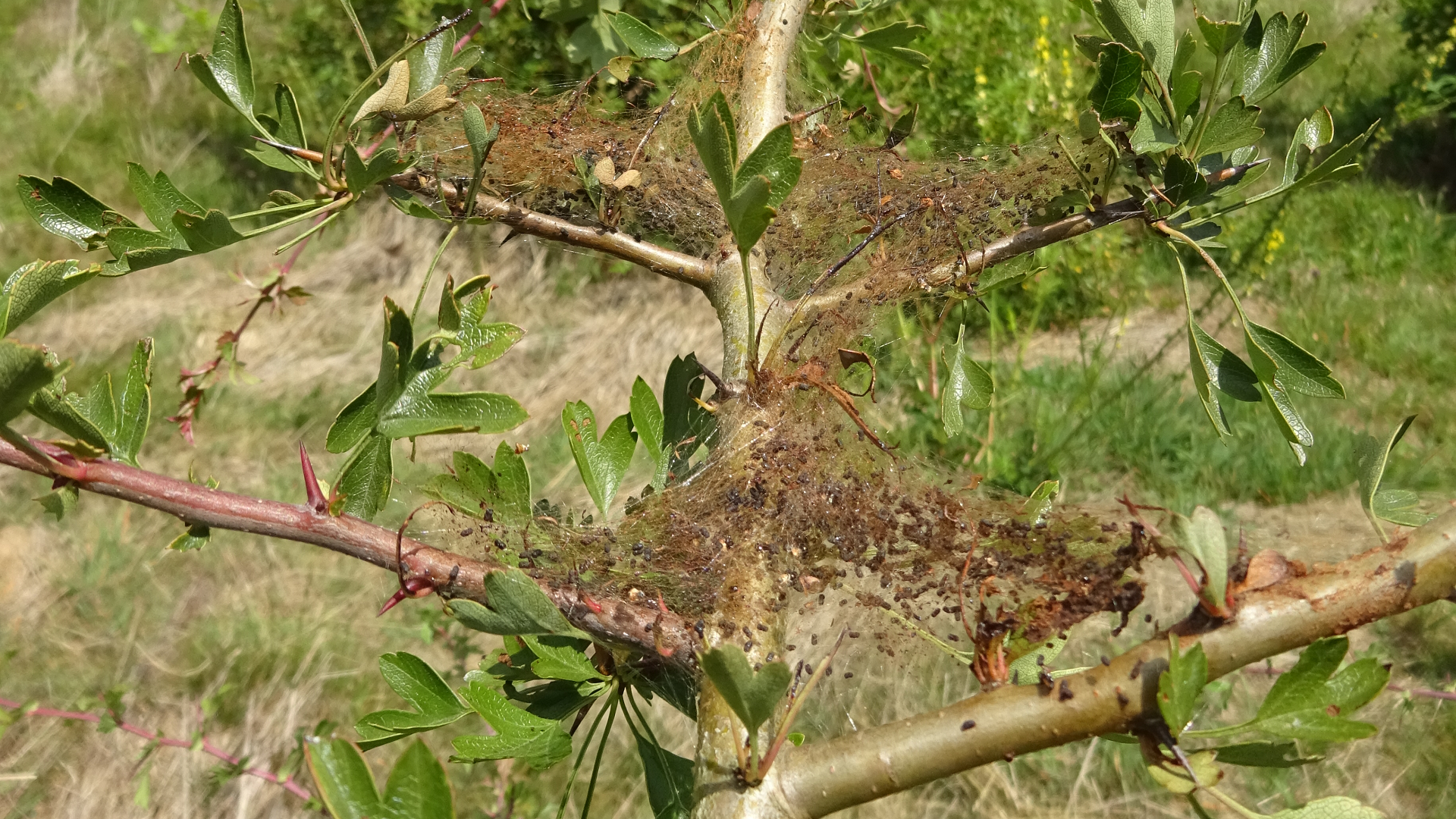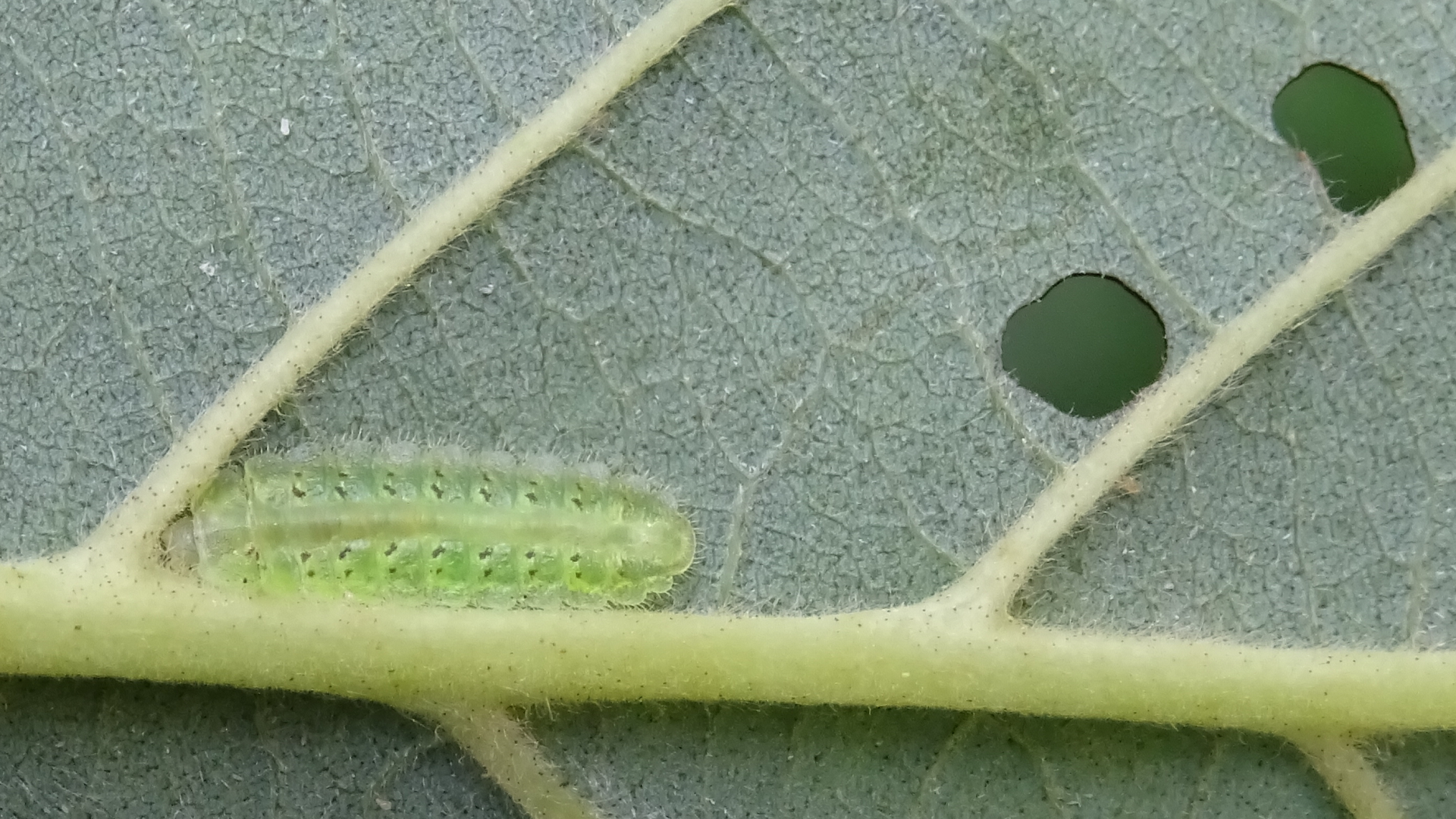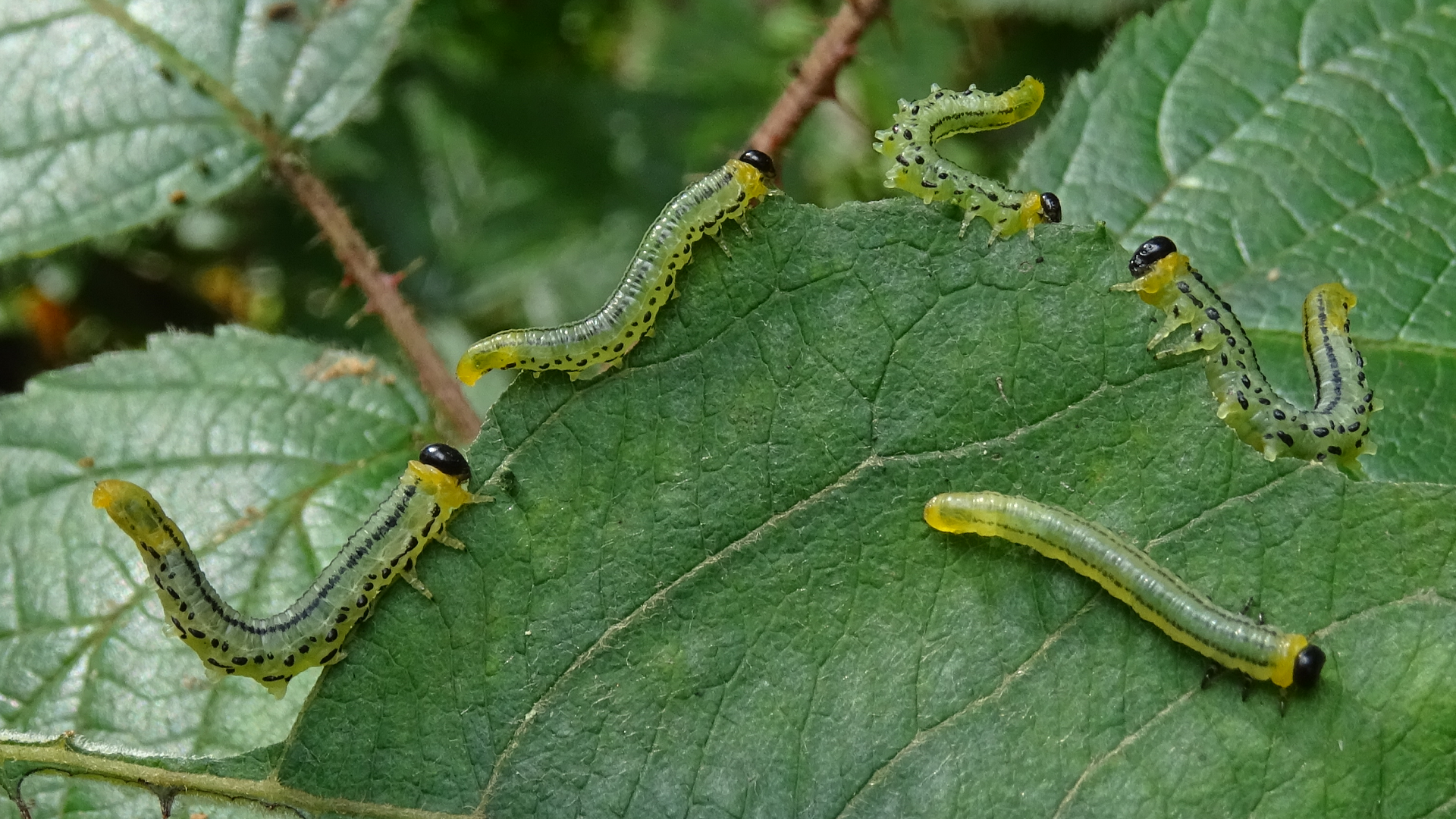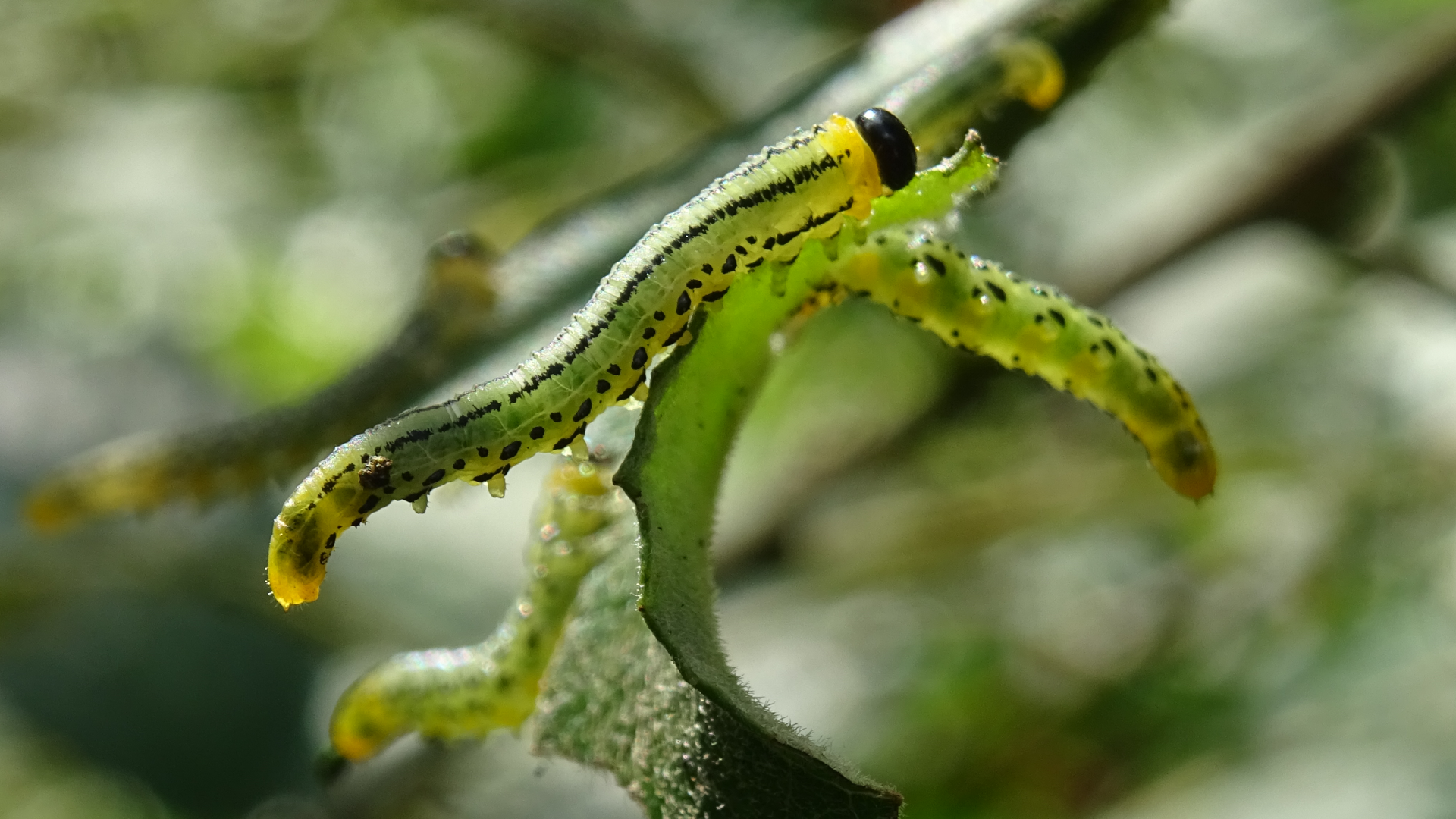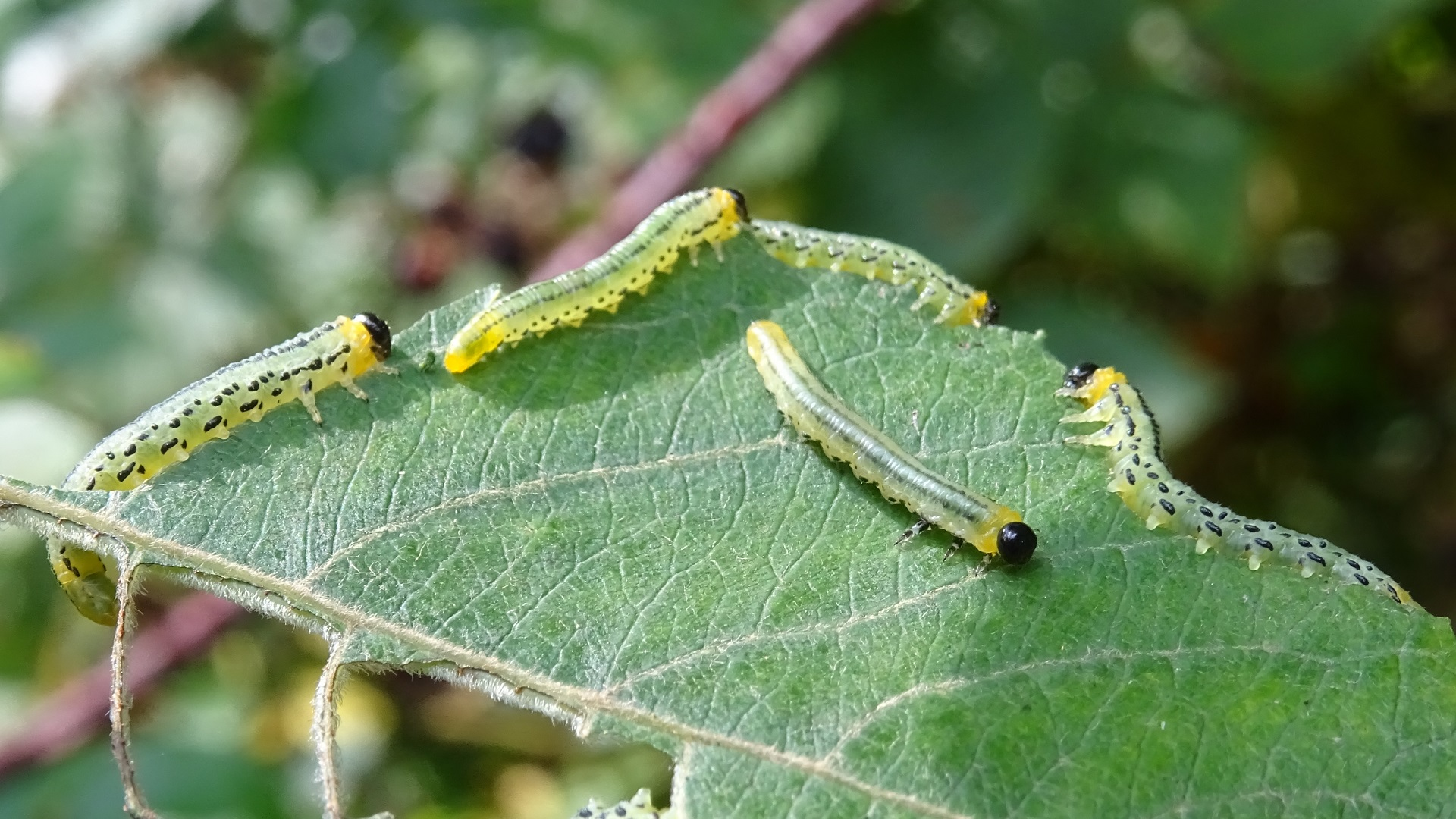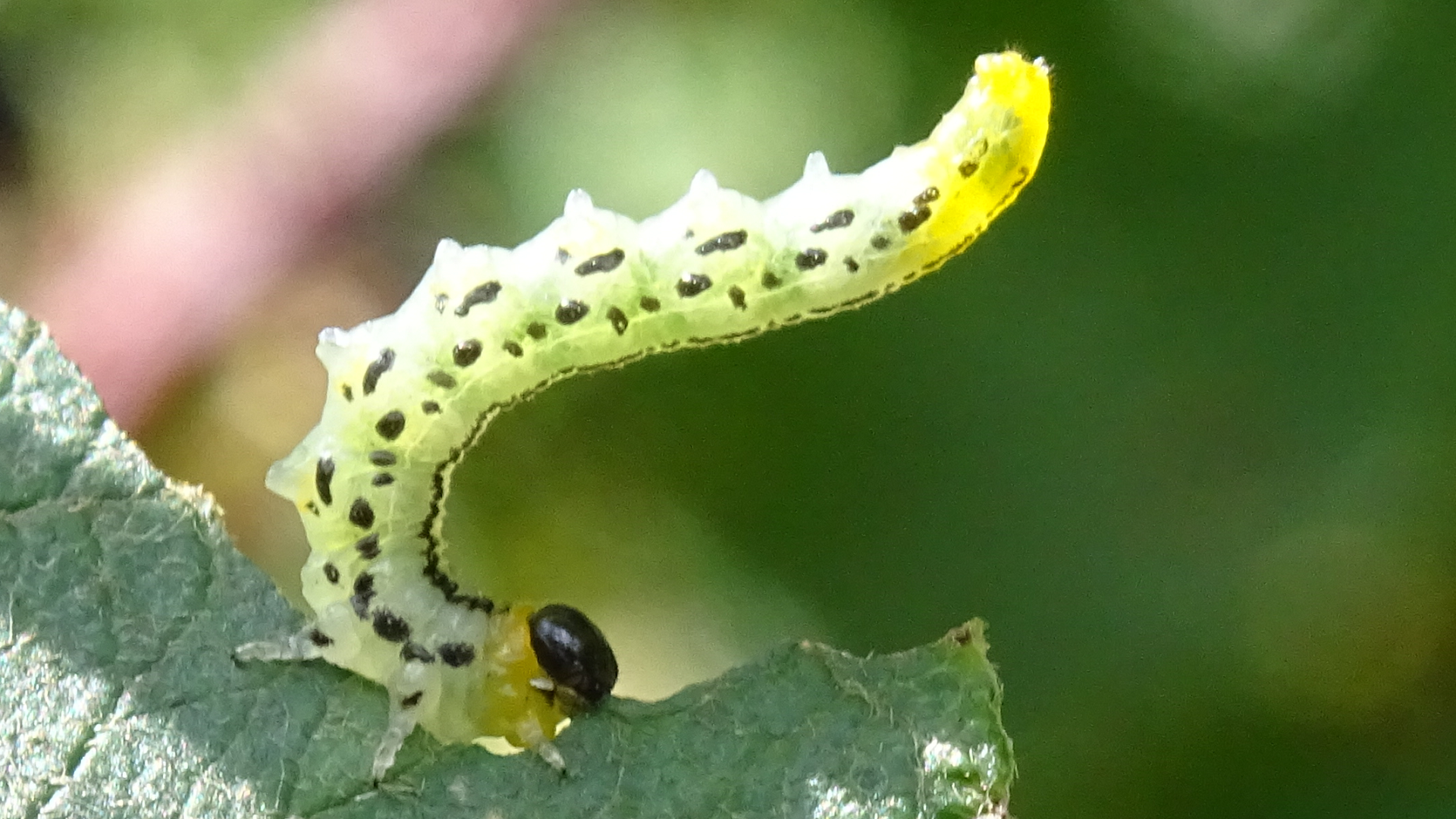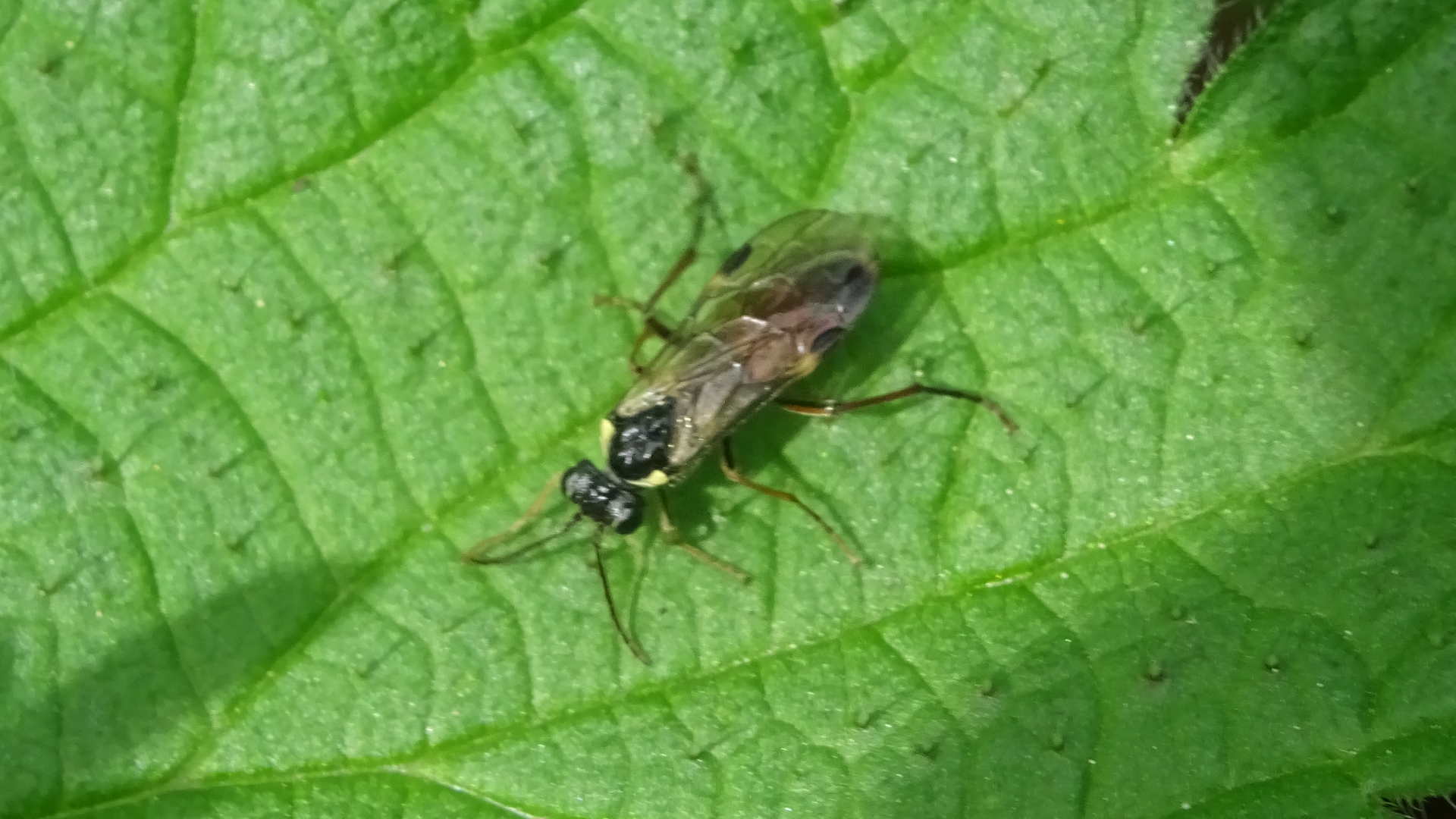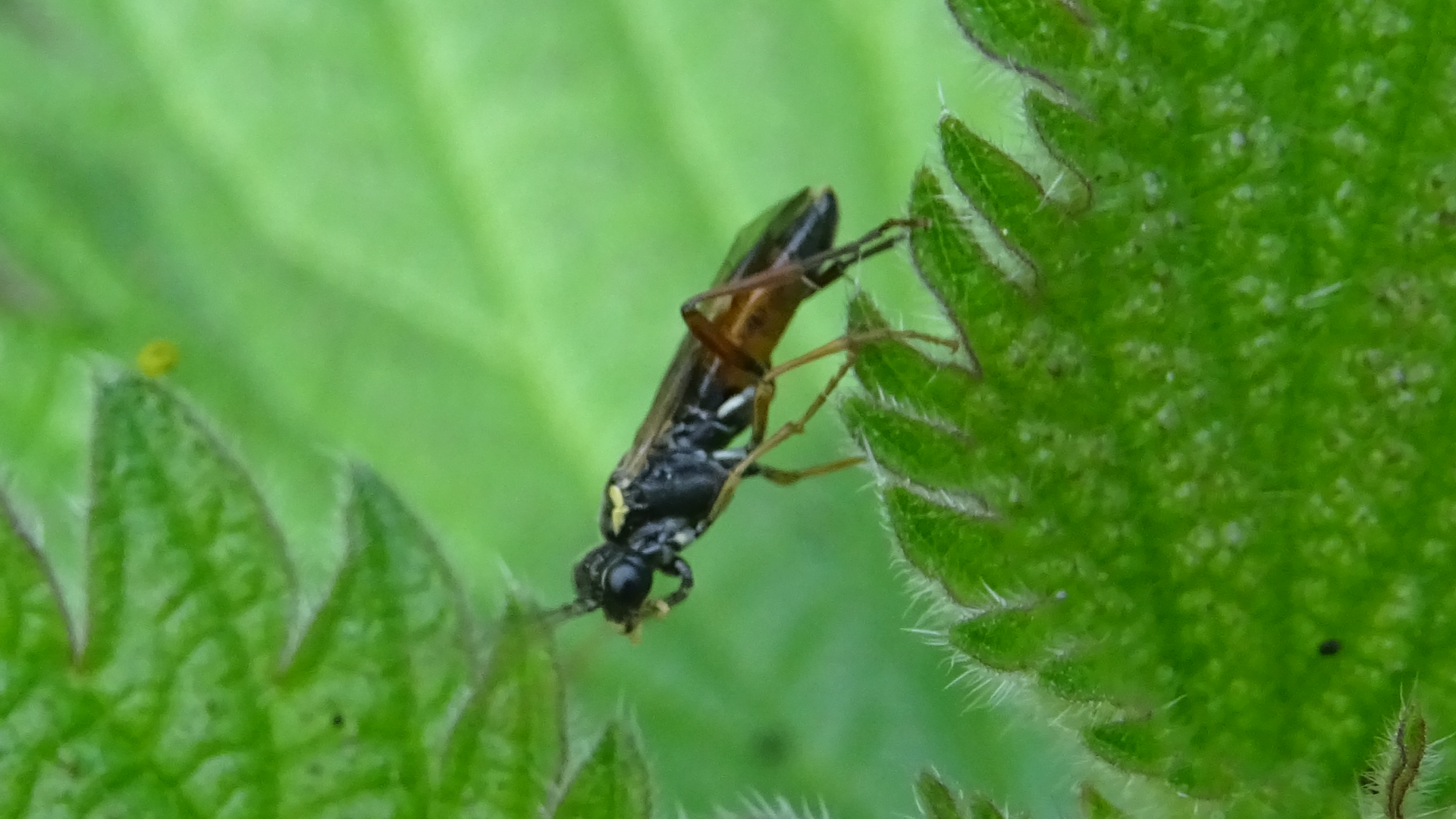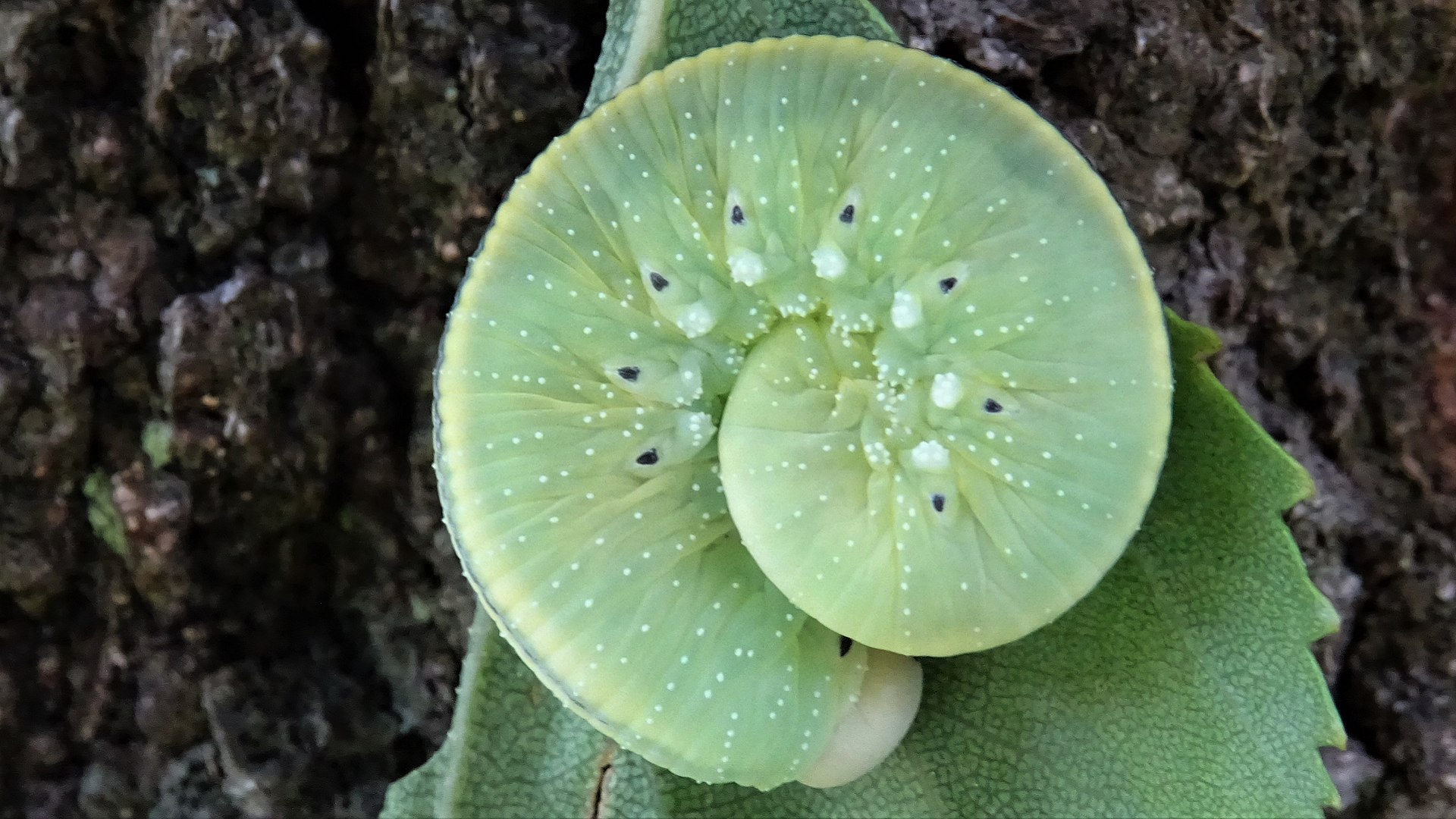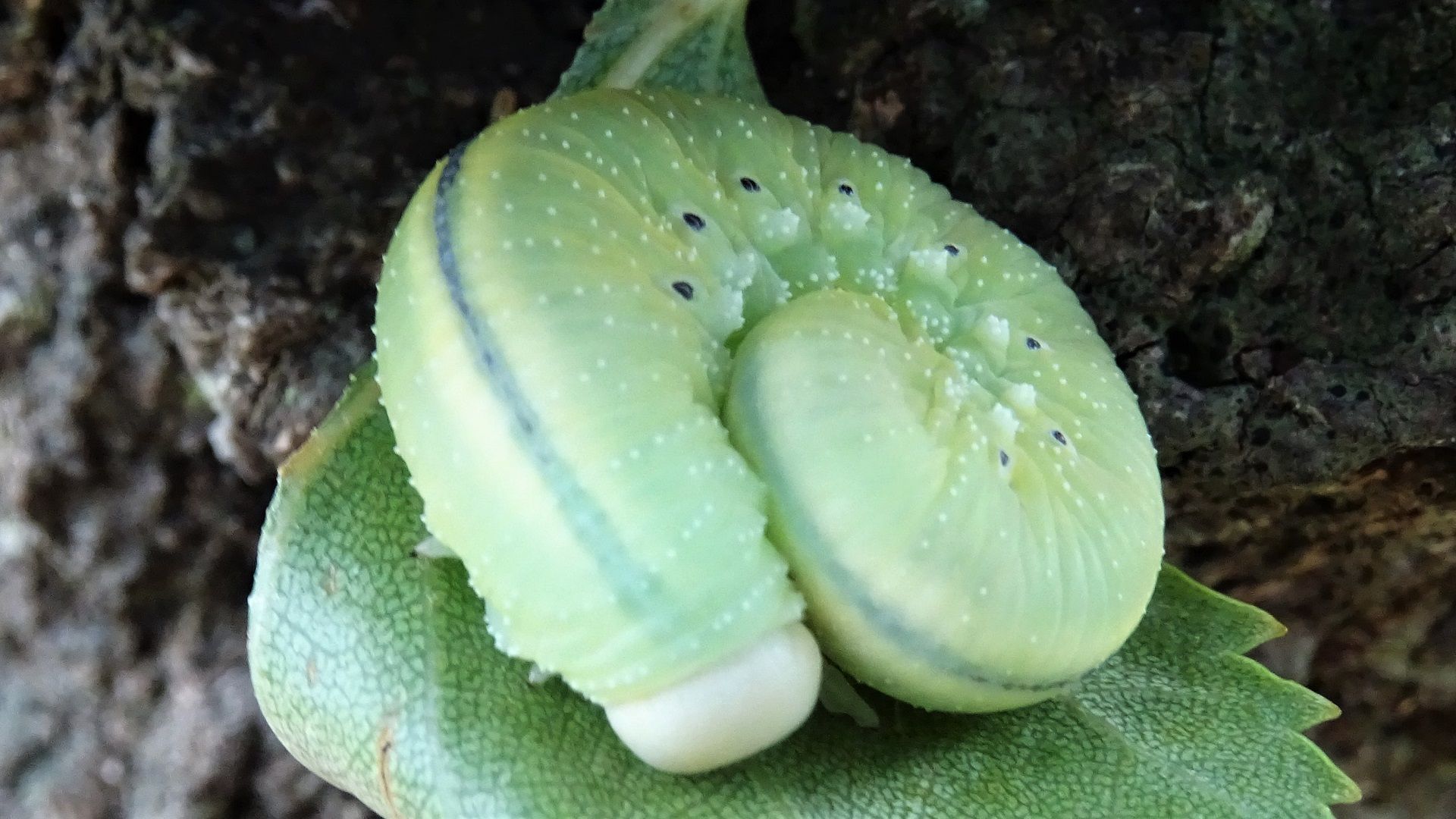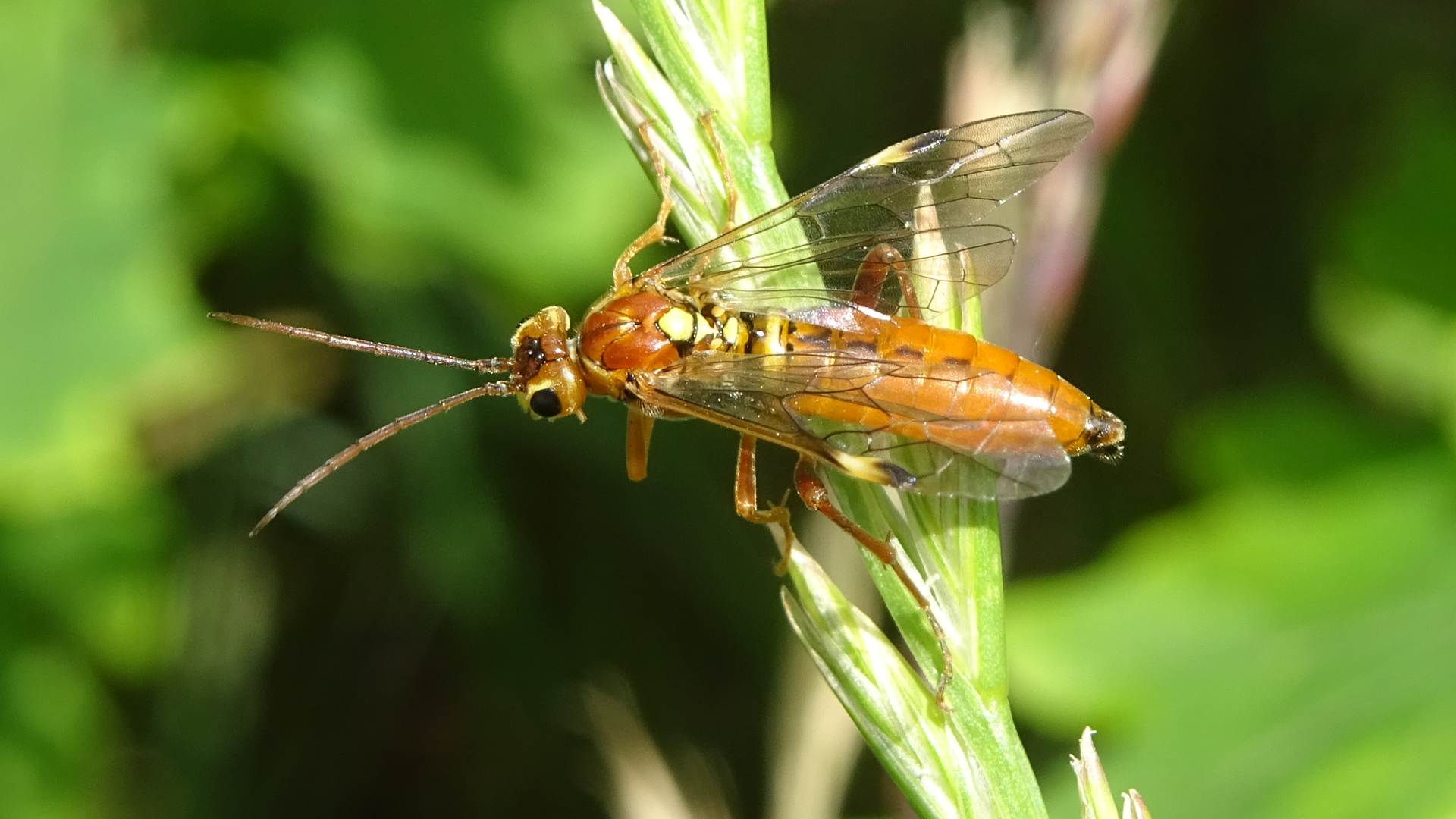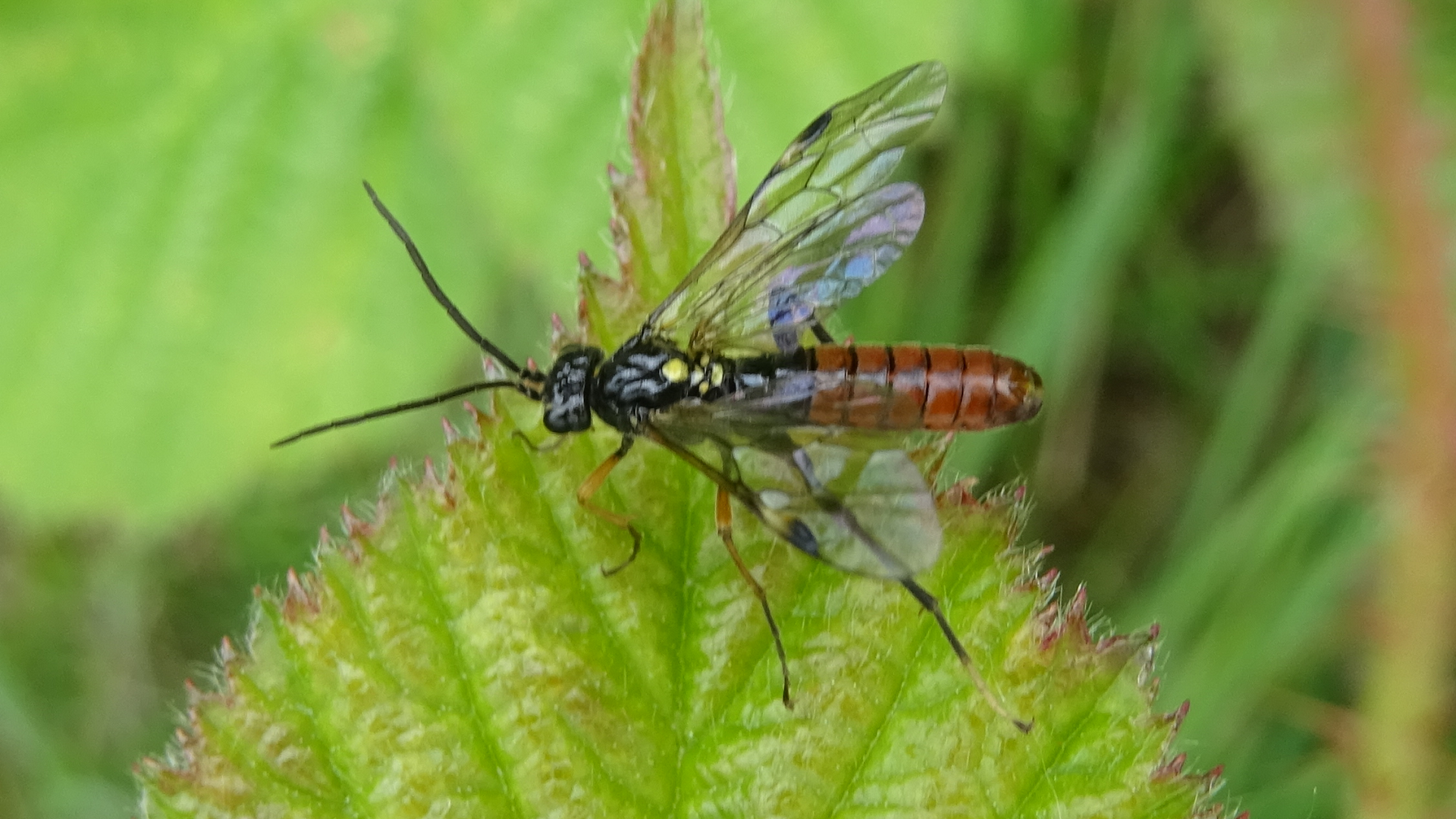INSECTS
HYMENOPTERA / SAWFLIES
Three
Periclista sawflies occur in Britain which feed mainly on oak. Identification of the individual larvae can usually be done by studying the spine arrangement at the tip of the body.
Sawfly
Apethymus filiformis flies late in the year and overwinters as an egg. Its bluish larvae emerges in spring to feed on deciduous trees.
Willow Bean-galler Euura proxima is a small Sawfly (3-5mm) that causes Kidney Bean Galls to appear on narrow-leaved willows. Often there is more than one gall on a leaf. The galls are green becoming reddish.
Willow Gall Sawfly
Eupontania pedunculi causes Hairy Pea Galls on the underside of Sallow leaves. A tiny circular shiny yellowish patch appears on the upper leaf surface which can be flush or very slightly raised.
Bronze Fusehorn
Arge ustulata (7-10mm) flies from May to July. Its larvae feed on Hawthorn, Birch and Willow.
Social Pear Spinner
Neurotoma saltuum
has larvae that live and feed in large communal webs on woody members of Pear, Hawthorn, Blackthorn and other members of the Rosaceae family. The adults (m.9-12mm, f.10-14mm) fly in May and June.
Flat Alder-cutter Platycampus luridiventris is a dark brown or blackish Sawfly (6-7mm) with orangy legs that flies in May and June. The flat green larvae feed on alder leaves making roundish holes in the surface.
Pavid Willow Nematine Euura pavida (6-7mm) fly from May to June and July to September. Its larvae feed in groups on Sallow, Willow, Poplar and Alder. Formerly in the genus Nematus, but now Euura.
Red-belted Cleaver
Aglaostigma aucupariae (7-9mm) is one of the first Sawflies to appear each spring. It flies from March to June. The larvae feed on Bedstraws.
Birch Sawfly Cimbex femoratus has green larvae with a white head. The larvae feed on birches.
Tenthredopsis
There are six British species of Tenthredopsis (7-12mm) as far is presently known. Some species have colour variation within a gender and also dimorphism between the genders. All species inhabit grassland, woodland edges and watercourses.
The larvae are nocturnal feeders on grass.
© hainaultforest.net. All rights reserved.


